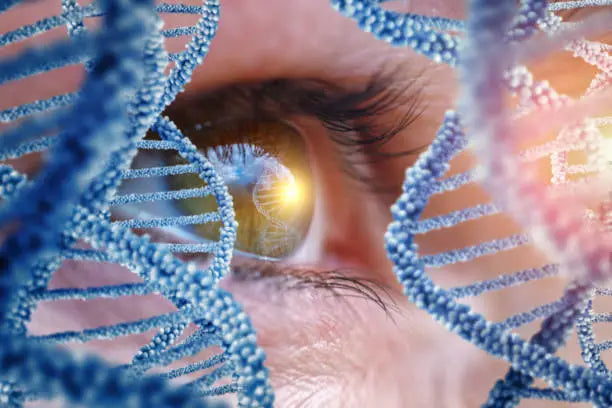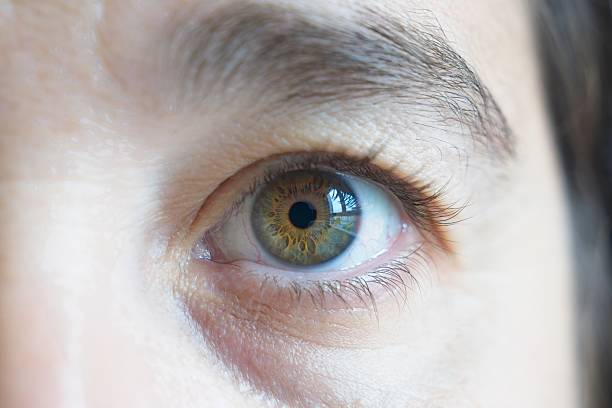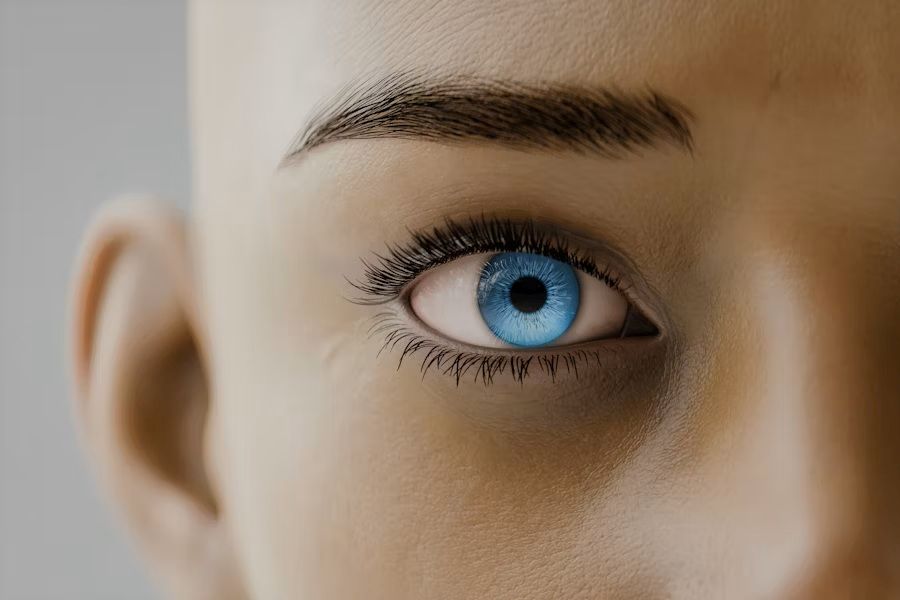The Science Behind Eye Color: Unraveling Genetic Mysteries

Eye color has long fascinated humans, serving as a captivating feature of our appearance and a subject of scientific inquiry. From the piercing blues to the deep browns, the hues of our irises tell a complex story of genetics, evolution, and human diversity. In this article, we'll delve into the intricate world of eye color genetics, exploring the factors that determine our eye color and the mysteries that still surround this fascinating trait.
Table of Contents
-
The Basics of Eye Color
-
Genetics Behind Eye Color
-
Melanin: The Key Pigment
-
Common Eye Colors and Their Genetic Makeup
-
Rare Eye Colors and Their Origins
-
Factors Influencing Eye Color Changes
-
The Evolution of Eye Color in Human Populations
-
Eye Color Inheritance Patterns
-
Heterochromia: When Eyes Have Different Colors
-
The Role of Eye Color in Human Health
-
Debunking Eye Color Myths and Misconceptions
-
Future Research and Potential Applications
The Basics of Eye Color
At its core, eye color is determined by the pigmentation of the iris, the colored part of the eye that surrounds the pupil. The iris is composed of two layers: the anterior layer, called the stroma, and the posterior layer, known as the epithelium. The interplay between these layers and the pigments they contain creates the vast array of eye colors we observe in the human population.
The primary pigment responsible for eye color is melanin, the same compound that determines skin and hair color. The amount, type, and distribution of melanin in the iris largely dictate the perceived eye color. However, the story doesn't end there. The structure of the iris itself, including the presence of proteins and the way light scatters within the eye, also plays a crucial role in determining the final color we see.
It's important to note that eye color is not a simple, single-gene trait as once believed. Instead, it's a complex characteristic influenced by multiple genes and environmental factors, making it a fascinating subject for genetic research.
Genetics Behind Eye Color
The genetic basis of eye color is intricate and involves several genes working in concert. The two main genes that play a significant role in determining eye color are OCA2 and HERC2, both located on chromosome 15. These genes are responsible for producing and regulating the production of melanin in the iris.
OCA2 (Oculocutaneous Albinism II) is the primary gene involved in eye color determination. It provides instructions for making the P protein, which is involved in the production and processing of melanin. Variations in this gene can lead to different levels of melanin production, resulting in a range of eye colors.
HERC2, on the other hand, doesn't directly produce melanin but acts as a regulatory gene. It controls the expression of OCA2, effectively turning it on or off. A specific variation in HERC2 is strongly associated with blue eyes, as it reduces the expression of OCA2, leading to lower melanin production.
Other genes that contribute to eye color include:
-
SLC24A4 and TYR, which are involved in the production and distribution of melanin
-
IRF4, which regulates melanin production
-
ASIP, which affects the type of melanin produced
The complex interplay between these genes and others yet to be fully understood creates the vast spectrum of eye colors we see in the human population.
Melanin: The Key Pigment
Melanin is the star player in the eye color show. This pigment, produced by specialized cells called melanocytes, comes in two main types: eumelanin and pheomelanin. Eumelanin is responsible for brown and black pigmentation, while pheomelanin produces red and yellow hues.
The amount and type of melanin in the iris determine the base eye color:
-
High levels of eumelanin result in brown eyes
-
Moderate levels of eumelanin produce green or hazel eyes
-
Low levels of melanin lead to blue eyes
However, the final eye color is not just about the quantity of melanin. The distribution and type of melanin also play crucial roles. For instance, green eyes result from a combination of light scattering (which produces blue) and a small amount of melanin (which adds a yellow tint).
The fascinating aspect of melanin in eye color is its dynamic nature. Unlike other genetic traits that remain fixed throughout life, eye color can change over time, particularly in infancy and early childhood. This is due to the gradual development of melanin in the iris, which can continue for several years after birth.
Common Eye Colors and Their Genetic Makeup
Let's explore the most common eye colors and the genetic factors behind them:
-
Brown Eyes: The most common eye color worldwide, brown eyes result from high levels of melanin in the iris. The OCA2 gene is typically highly active in individuals with brown eyes, leading to significant melanin production. Brown eyes are dominant in genetic terms, meaning that if one parent passes on a gene for brown eyes, it's likely to be expressed.
-
Blue Eyes: Blue eyes are caused by a lack of melanin in the stroma of the iris. The blue color is not due to pigment but rather the way light scatters in the stroma (known as the Tyndall effect). A specific variation in the HERC2 gene, which reduces OCA2 expression, is strongly associated with blue eyes. This variation is recessive, meaning both parents must pass it on for a child to have blue eyes.
-
Green Eyes: One of the rarer eye colors, green eyes result from a combination of light scattering and a small amount of melanin. The genetic basis for green eyes is complex and not fully understood, but it's thought to involve variations in OCA2 and other pigmentation genes.
-
Hazel Eyes: Hazel eyes are characterized by a combination of colors, typically green and brown. This color is thought to result from moderate melanin production and variations in the distribution of melanin in the iris. The genetics of hazel eyes are complex and involve multiple genes.
It's important to note that eye color exists on a spectrum, and these categories are simplifications of a much more complex reality. Many people have eye colors that don't fit neatly into these categories or have eyes that appear to change color depending on lighting conditions.
Rare Eye Colors and Their Origins
While brown, blue, green, and hazel eyes account for the majority of eye colors in the human population, there are several rare eye colors that captivate our imagination. Let's explore some of these unique hues and their genetic origins:
-
Amber Eyes: Amber eyes, characterized by a golden or copper hue, are extremely rare. They result from a reduced amount of melanin and increased pheomelanin (the reddish form of melanin). The exact genetic mechanism behind amber eyes is not fully understood, but it's likely related to variations in the genes controlling melanin production and distribution.
-
Gray Eyes: Often confused with blue eyes, true gray eyes are quite rare. They're thought to result from a unique combination of collagen deposits in the stroma and light scattering. The genetic basis for gray eyes is still being researched, but it's likely related to variations in the same genes that influence blue eye color.
-
Violet Eyes: Extremely rare, true violet eyes are the stuff of legend. Most cases of "violet" eyes are actually variations of blue eyes that appear violet in certain lighting conditions. However, some individuals with albinism may have eyes that appear violet due to the complete lack of melanin combined with light reflecting off the red blood vessels in the retina.
-
Red or Pink Eyes: These eye colors are typically associated with albinism, a condition characterized by a lack of melanin production. In individuals with albinism, the lack of pigment in the iris allows the blood vessels of the retina to be visible, creating a reddish or pink appearance.
The rarity of these eye colors often stems from unique genetic variations or combinations of variations that are uncommon in the general population. As our understanding of the genetics behind eye color grows, we may uncover more about the origins of these fascinating and rare eye colors.
Factors Influencing Eye Color Changes
While eye color is primarily determined by genetics, it's not always a fixed trait. Several factors can influence changes in eye color throughout an individual's lifetime:
-
Age: The most significant changes in eye color occur in infancy and early childhood. Many babies are born with blue or gray eyes that darken as melanin production increases. This process can continue for several years after birth.
-
Puberty and Pregnancy: Hormonal changes during puberty or pregnancy can sometimes cause slight changes in eye color. This is due to the influence of hormones on melanin production.
-
Certain Medical Conditions: Some conditions, such as Horner's syndrome or Fuchs heterochromic iridocyclitis, can cause changes in eye color.
-
Medications: Certain medications, particularly those used to treat glaucoma (like latanoprost), can cause darkening of the iris as a side effect.
-
Exposure to Sunlight: Long-term exposure to sunlight may cause the iris to produce more melanin as a protective measure, potentially darkening eye color slightly over time.
-
Diet: While not scientifically proven, some people claim that certain dietary changes can influence eye color. However, these effects, if they exist, are likely to be subtle and temporary.
-
Emotional States: The appearance of eye color can sometimes change with emotional states due to pupil dilation, which can make the iris appear darker or lighter.
It's important to note that dramatic changes in eye color in adulthood are rare and should be evaluated by an eye care professional, as they could indicate an underlying health issue.
The Evolution of Eye Color in Human Populations
The diversity of eye colors we see today is a relatively recent development in human evolution. For most of human history, all humans had brown eyes. The mutations that led to blue eyes are estimated to have occurred between 6,000 and 10,000 years ago.
The evolutionary reasons for the development of different eye colors are still debated. Some theories include:
-
Sexual Selection: Lighter eye colors might have been seen as attractive, leading to increased reproductive success for individuals with these traits.
-
Adaptation to Environment: In northern latitudes with less sunlight, lighter eye colors might have provided an advantage in vitamin D synthesis or visual acuity in low-light conditions.
-
Genetic Drift: The spread of eye color variations could have been a random genetic event in small populations that then expanded.
-
Linked Selection: Eye color genes might be close to other genes that provided survival advantages, leading to their preservation and spread.
The distribution of eye colors varies significantly across different populations. Brown eyes are most common worldwide, especially in Africa and Asia. Blue eyes are more prevalent in Northern and Eastern Europe, while green eyes are most common in Northern and Central Europe.
This geographic distribution reflects the evolutionary history of these traits and the migration patterns of human populations. As humans continue to mix across traditional geographic boundaries, the distribution of eye colors is likely to become more diverse and complex.
Eye Color Inheritance Patterns
Understanding how eye color is inherited can be complex due to the multiple genes involved. However, some general patterns can be observed:
-
Brown is Dominant: If one parent has brown eyes and the other has blue eyes, the children are more likely to have brown eyes. However, this is not always the case due to the complexity of eye color genetics.
-
Blue is Recessive: For a child to have blue eyes, both parents must carry the gene for blue eyes, even if they don't have blue eyes themselves.
-
Green and Hazel are Less Predictable: The inheritance of green and hazel eyes is more complex and less predictable due to the interaction of multiple genes.
-
Unexpected Results are Possible: Due to the complexity of eye color genetics, it's possible for two blue-eyed parents to have a brown-eyed child, or for two brown-eyed parents to have a blue-eyed child, although these scenarios are less common.
It's important to remember that eye color inheritance is not as simple as the Mendelian genetics taught in basic biology classes. The involvement of multiple genes means that eye color can sometimes skip generations or appear unexpectedly.
Genetic counselors and tools like Punnett squares can help predict the likelihood of certain eye colors in offspring, but these predictions are never 100% accurate due to the complexity of the genetics involved.
Heterochromia: When Eyes Have Different Colors
Heterochromia is a fascinating condition where an individual has two different colored eyes, or where one eye has multiple colors. This condition adds another layer of complexity to the already intricate world of eye color genetics. There are three main types of heterochromia:
-
Complete Heterochromia: This occurs when one eye is a completely different color from the other. For example, one eye might be blue while the other is brown.
-
Sectoral Heterochromia: In this type, part of one iris is a different color from the rest of the iris. It can appear as a wedge or a splash of color.
-
Central Heterochromia: This involves a different color near the border of the pupil, which then radiates outward into another color.
Heterochromia can be congenital (present at birth) or acquired later in life. Congenital heterochromia is usually benign and can result from genetic chimerism, mosaicism, or mutations in genes involved in eye color determination.
Acquired heterochromia, on the other hand, can be caused by various factors including:
-
Injury to the eye
-
Certain medications
-
Glaucoma
-
Melanoma of the iris
-
Horner's syndrome
While heterochromia is often harmless, especially when congenital, acquired heterochromia should be evaluated by an eye care professional to rule out any underlying health issues.
The genetics of heterochromia are not fully understood, but it's believed to involve mutations or variations in genes related to melanin production and distribution. In some cases, it may be associated with other genetic syndromes.
The Role of Eye Color in Human Health
While eye color is often considered a purely aesthetic trait, it can have implications for human health:
-
Melanoma Risk: People with light-colored eyes (blue, green, or gray) may be at a higher risk for ocular melanoma, a type of eye cancer. This is thought to be due to the reduced protection against UV radiation provided by lighter iris pigmentation.
-
Light Sensitivity: Individuals with lighter eye colors often report more light sensitivity. This is because darker pigments in brown eyes absorb more light, reducing glare and sensitivity.
-
Night Vision: Some studies suggest that people with darker eyes may have slightly better night vision, while those with lighter eyes might perform better in activities requiring rapid eye movement in bright conditions.
-
Pain Tolerance: Interestingly, some research has suggested a correlation between eye color and pain tolerance, with darker-eyed individuals potentially having higher pain thresholds.
-
Alcohol Tolerance: A study found that people with light-colored eyes may be able to tolerate more alcohol than those with dark eyes, although more research is needed to confirm this finding.
-
Diabetes Risk: Some studies have found a correlation between light eye color and increased risk of Type 1 diabetes, although the reasons for this are not clear.
It's important to note that while these associations exist, eye color alone does not determine an individual's health outcomes. Many other genetic and environmental factors play significant roles in overall health and disease risk.
Debunking Eye Color Myths and Misconceptions
As with many visible genetic traits, eye color has been the subject of numerous myths and misconceptions. Let's address some of the most common ones:
-
Myth: Eye color is determined by a single geneReality: Eye color is influenced by multiple genes, with OCA2 and HERC2 playing major roles, but many others contributing as well.
-
Myth: Two blue-eyed parents can't have a brown-eyed childReality: While rare, it is possible due to the complex genetics involved in eye color determination.
-
Myth: Eye color can predict personality traitsReality: There is no scientific evidence linking eye color to personality traits. Such claims are based on pseudoscience.
-
Myth: You can permanently change your eye color through dietReality: While certain foods may slightly and temporarily alter the appearance of your eyes, diet cannot fundamentally change your eye color.
-
Myth: All babies are born with blue eyesReality: While many Caucasian babies are born with blue or gray eyes that may darken, babies of other ethnicities are often born with brown or dark eyes.
-
Myth: Eye color is fixed after childhoodReality: While major changes are rare, eye color can continue to change subtly throughout life due to various factors.
-
Myth: Green eyes can see better in the darkReality: There's no scientific evidence that eye color affects night vision capabilities.
Dispelling these myths is important for fostering a better understanding of the science behind eye color and genetics in general. It's crucial to rely on peer-reviewed scientific research rather than anecdotal evidence or popular beliefs when discussing genetic traits like eye color.
Future Research and Potential Applications
The field of eye color genetics continues to evolve, with ongoing research promising to uncover more about this fascinating trait. Some areas of current and future research include:
-
Gene Therapy: As we better understand the genes involved in eye color, there may be potential for gene therapy to treat certain eye conditions related to pigmentation disorders.
-
Personalized Medicine: Knowledge of eye color genetics could contribute to more personalized approaches in treating eye diseases or predicting risk factors for certain conditions.
-
Forensic Science: Advances in eye color genetics could improve forensic techniques, allowing for more accurate predictions of eye color from DNA samples.
-
Evolution and Population Genetics: Further study of eye color variations across populations can provide insights into human migration patterns and evolutionary history.
-
Developmental Biology: Research into how eye color develops and changes over time can shed light on broader processes of human development.
-
Artificial Intelligence in Genetics: AI and machine learning techniques are being applied to genetic data to better predict eye color and other complex traits from DNA information.
-
Epigenetics of Eye Color: Researchers are exploring how environmental factors might influence the expression of eye color genes, potentially explaining some of the variability we see in eye color.
As research progresses, we may discover new genes involved in eye color determination, gain a better understanding of rare eye colors, and uncover more about how eye color relates to other aspects of human biology and health.
The science of eye color is a testament to the complexity and beauty of human genetics. From the basic principles of melanin production to the intricate interplay of multiple genes, eye color represents a fascinating intersection of genetics, evolution, and human diversity. As we continue to unravel the mysteries behind this captivating trait, we not only gain insights into our own biology but also open doors to potential applications in medicine, forensics, and beyond.
While much has been discovered about the genetics of eye color, there is still much to learn. The ongoing research in this field promises to shed light on not just the colors of our eyes, but on the broader tapestry of human genetic variation and its implications for health and identity.
As we look to the future, the study of eye color genetics serves as a reminder of the incredible complexity of human biology and the endless fascination it holds for scientists and the general public alike. It underscores the importance of continued research in genetics and the potential for this knowledge to impact various aspects of our lives and society.
發表評論
評論將在出現之前批准。




